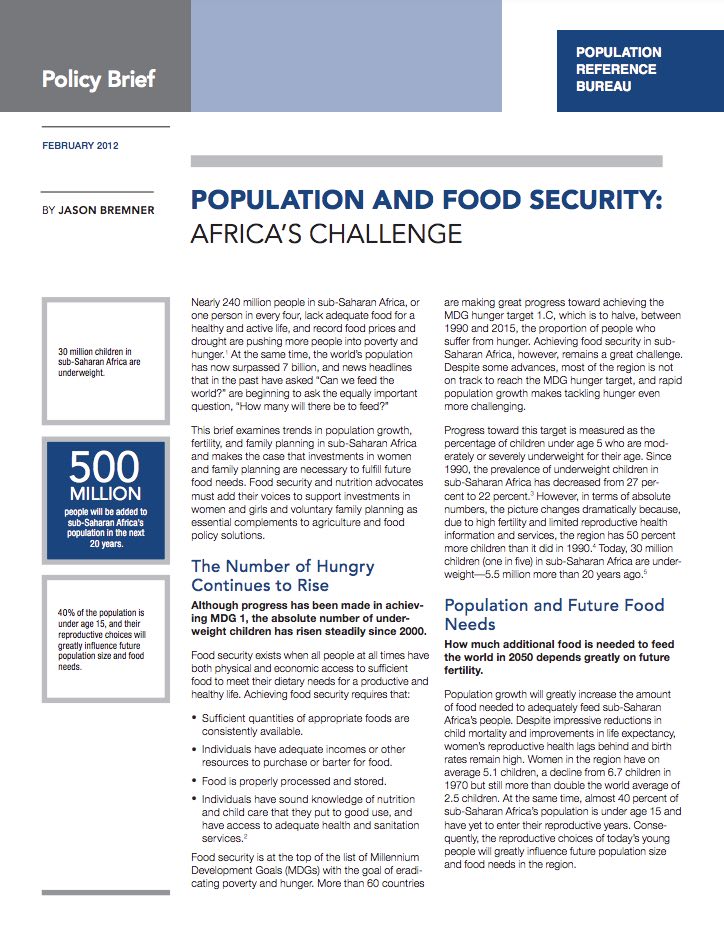PRB Discuss Online: Chronic Diseases Affect Youth Globally
In 2008, 36 million people died from noncommunicable diseases (NCDs). Deaths related to these chronic diseases are increasing, especially in low- and middle-income countries.
In 2008, 36 million people died from noncommunicable diseases (NCDs). Deaths related to these chronic diseases are increasing, especially in low- and middle-income countries.

(2012) Almost two of every three people in sub-Saharan Africa live in a rural area, relying principally on small-scale agriculture for their livelihood. Improving agriculture on small farms is critical to reducing hunger.
(2009) For over 35 years, Dr. Sharon Ramey has studied early childhood development and how to implement scientific research in policy. On Feb. 11, she participated in PRB's Policy Seminar series to discuss how to take what is known to work for early childhood development and bring science to bear to design effective policy.

Supporting localization isn’t about stepping back—it’s about showing up differently. In Dakar, we witnessed what’s possible when we stop talking about youth leadership and start listening to it.
(2011) Vouchers are frequently mentioned as a promising alternative finance mechanism to achieve a variety of goals in health systems and reproductive health services. Do vouchers work?

Project: KIDS COUNT
(2017) The KIDS COUNT Data Book—now in its 28th year—provides an up-to-date and detailed picture of how children are faring in the United States, nationally and in each state.

In the book Five Generations at Work: How We Win Together, for Good, authors Patrick Dunne and Rebecca Robins describe how we’re living in a time of unprecedented demographic change, where five generations work alongside each other in an ideologically and politically fractured environment.

Project: Empowering Evidence-Driven Advocacy
A presentation (video and PowerPoint) that PRB and Stretchers Youth Organization developed illustrates the barriers that prevent young people from accessing and using contraception—such as provider attitudes and social norms—and emphasizes that youth’s need for contraceptives will grow over time.
This article focuses on the demographics of the 10 countries that make up the Sahel region--Burkina Faso, Chad, Eritrea, The Gambia, Guinea-Bissau, Mali, Mauritania, Niger, Senegal, and Sudan.